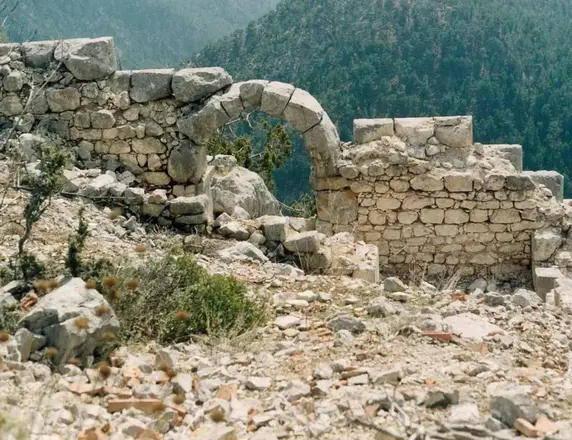Kasai Ancient City
Description
The sovereignty of the city of Kasai, built on a high hill near Karadere Quarter of Gündoğmuş District, extends at least to Güzelsu and Çaltılıçukur in the west. Therefore, we can say that Kasai was the fourth city that had rights to the lands of Akseki during the Roman Period.
The inscription on a statue base, which must have rolled down from Asar Tepe, a large kome (village) northeast of Çaltılıçukur Neighborhood, to the modern settlement area, and which is now used as a spolia material on the wall of the neighborhood cemetery, documents that the city of Kasai honored its own citizen Caelianus Memnon in the mid-3rd century AD. Although he belonged to the city's gentry, he died at a young age, and therefore before he could fulfill the charity his hometown expected of him.
Nevertheless, the information about his father in the inscription clearly reveals the distinctive position of this family among the city's elite. In another fragment of an inscription on a garden wall in the Güzelsu Quarter, the Boule (Consultative Assembly) and Demos (People's Assembly), the highest administrative authorities of the city of Kasai, honor a lady named Aurelia Cassiana, while three boundary inscriptions on bedrock near Güzelsu mark the boundaries of three rural settlements, probably under the patronage of Kasai, whose names begin with the letters A, G and K. An inscription fragment we found near the Güzelsu Quarter, in the area known as Papaz Kayası, records that a gentleman surnamed Cassii, but whose forenames are not preserved in the inscription, and his wife donated 3000 denarii, probably for the construction of a temple. It is possible to see the column drums and bases, architrave and lintel blocks of the structure in question, which show a very high quality of workmanship, scattered over a wide area.
Two inscriptions on the northern surface of the rock mass rising in the same region, which gives its name to the site, were carved by the visitors of the building, which we believe to be a temple. The first one contains a touching address written by a lady named Tykhe for her husband: "O Rufus, there was no other before you or after you". The second is a wall inscription belonging to two lords named Modestus and Celer. As can be seen, these inscriptions, neither of which have any official content, seem to have been carved here in order to reach as many readers as possible. If this assumption is correct, we can say that the temple had a lot of visitors.
Short Description
The sovereignty of the city of Kasai, built on a high hill near Karadere Quarter of Gündoğmuş District, extends at least to Güzelsu and Çaltılıçukur in the west. Therefore, we can say that Kasai was the fourth city that had rights to the lands of Akseki during the Roman Period.



